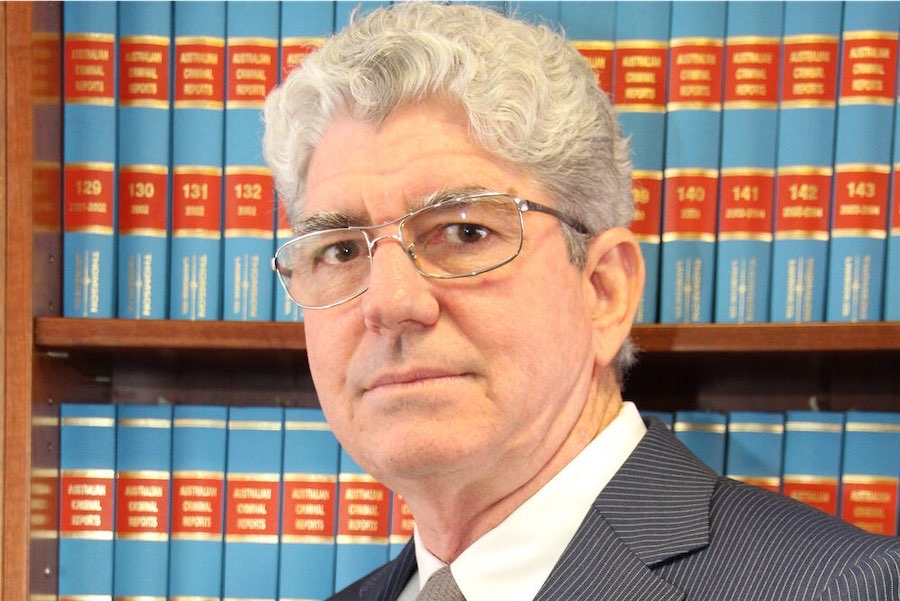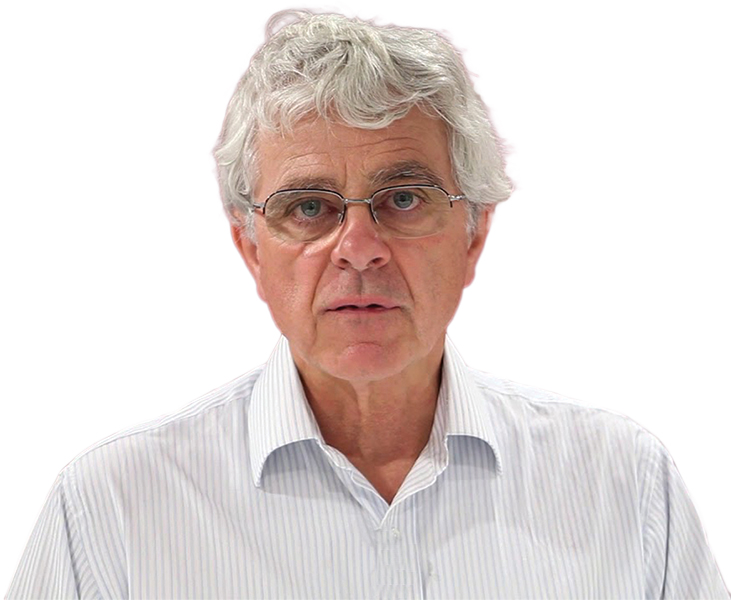
“Therapeutic jurisprudence is a familiar concept to judicial officers who specialise in criminal cases because the traditional objectives of sentencing offenders include punishment, deterrence, community protection and offender rehabilitation,” but there’s more to it, says legal columnist HUGH SELBY.
In September 2024 the Judicial Commission of NSW published “Therapeutic Jurisprudence: a practical guide to developing therapeutic intervention skills for judicial officers in specialist courts”. Anyone can read it here.

And even if you don’t want to read it, scan through the table of contents. Why? Because if you or anyone you know is ever an “actor” in a courtroom, then some of those contents will take on real meaning – that you would like to be available – as practical steps to prevent avoidable trauma.
For those practical steps to happen this guide must be seen as a starting point: it is the pre-reading that sets out various theories and offers a range of practical approaches that can then be followed by workshops at which judicial officers can discuss and practise some (but not all) of the practical skills outlined in the guide. That “practise” should be around realistic scenarios with actors playing the lawyer, party and witness roles.
Therapeutic jurisprudence
“Therapeutic” means to have a healing effect. “Jurisprudence” refers to the competing theories as to both the functions of laws and how lawmakers and courts should make and apply the law.
The question as to how much or little the law should regulate “private” behaviour is jurisprudential, as is the question: “Are mandatory minimum sentences for specified offences a proper or improper sentencing mechanism?”
“Therapeutic jurisprudence” is a familiar concept to judicial officers who specialise in criminal cases because the traditional objectives of sentencing offenders include punishment, deterrence, community protection and offender rehabilitation.
All of these can be influenced for good by the manner in which a sentence reflects the sentencer’s appreciation of an offender’s background and their potential to “turn their life around”.
A significant development in Australian Criminal Law, and an illustration of therapeutic jurisprudence in action, is the approach taken by the High Court in the 2013 case of Bugmy.
The case summary notes that “the same sentencing principles apply irrespective of the identity of a particular offender or his or her membership of an ethnic or other group. Additionally… the effects upon an offender of profound deprivation do not diminish over time and should be given full weight when sentencing the offender (my emphasis). However, those effects do not necessarily serve to mitigate an offender’s sentence, given the conflicting purposes of punishment, such as rehabilitation and personal and general deterrence, which must be balanced in each individual case”.
As illustrations of therapeutic jurisprudence seeking to improve the workings of our courts, there are the specialist courts that sentence indigenous offenders, the drug courts which monitor the offender’s progress towards set goals, and the “protections” given to complainants in sexual assault cases that permit them to give their evidence from remote rooms.
The September 2024 publication addresses issues of “cultural identity” (chapter 10) covering both indigenous and immigrant cultures. It also extends the notion of therapeutic jurisprudence to promote further ways in which other “actors” in the criminal justice system (such as witnesses and the judges) can manage the “trauma” of one or more trials.
Acknowledging history and the present
It is notorious that after the jury was discharged in the trial of Bruce Lehrmann for an alleged rape of Brittany Higgins, the then ACT DPP Shane Drumgold SC announced there would not be a second trial because of the harm to Ms Higgins’ mental health that might result from her being in the witness box a second time.
(Despite the “presumed innocence of the accused” until and if they are found guilty, our legal system and politicians pay scant attention to any trauma caused to them by, for example, “over the top” media attention, being held in jail for many months until their trial, or even having their means of livelihood, such as a truck seized and detained, or their capacity to earn an income interrupted for several years. Australian law does not include a right to a speedy trial.)
From time to time there are reports of magistrates and judges who “burn out” because of the workload, or because of the never-ending succession of “nasty” cases. They share that burden with the investigating police, too many of whom retire early because of long-term trauma induced incapacity.
The report notes a 2023 survey that revealed that more than 30 per cent of judicial officers showed sufficient signs of “trauma” from their job to justify evaluation for PTSD. There is a “Personalised burnout prevention plan” in Appendix D.
In August 2024 there was wide media coverage of the sentencing of Adam Britton in the NT Supreme Court for his long-time, appalling treatment of animals. His actions were so gross that Chief Justice Michael Grant “warned that the details had the potential to cause ‘nervous shock or some other adverse psychological reactions’ and excused court officers”
Spare a few moments of concern for the chief justice, the police investigators, and the lawyers – all of whom had to “master” all the awful detail.
The limits to intervention
There are limits as to what judicial officers can do when taking a therapeutic approach to sentencing: “A judicial officer is not responsible for the future choices and behaviours of offenders, but is responsible for the process in the courtroom and through… controlling process, can influence the offender’s psychological growth.”
“Process” includes in this report the judicial officer asking the offender questions, listening to the answers, and making a comment that shows the interaction was worthwhile. This may seem unremarkable; however, there are many judicial officers who adhere to the dictum: “Play it safe, keep your mouth shut”.
There are good reasons for that caution; for example, if the questioning elicited other offending with which the offender has not been charged. While information carefully gleaned from an offender might give the sentencing judge better data to separate the offender from the offender’s past actions, the benefits may not be worth the risk.
A suggested model for the judge and offender interaction is set out. It covers the why, the what, the how and the when of these stages: introductions as to who is present and why, ensuring that the offender is actively engaging in the process; discussion about the crimes and various perspectives, eg community, victim, offender, offender’s family; sentencing which has specific regard for each perspective; and, how the judicial officer should express themselves.
Very useful, in Appendix A, are instructions that a judicial officer or a court official can give to a witness or accused/offender who is “breaking down” in the courtroom. The techniques include how to breathe, the butterfly (cross over of arms) self-hug, and repetitive touching exercise.
Role confusion
There is then a discussion of the use in the courtroom of “cognitive behavioural therapy” (CBT). While the explanation of what it means, and how it can be used in treatment, is informative, its use by a judicial officer in sentencing (save in a court which actively monitors an offender after sentencing ) is unrealistic: there simply isn’t time, nor is there reason for a judge to have that expertise.
Making time, however, for ensuring understanding by an offender of the “sentencing process” is worthwhile for those offenders who have, for example, issues with impulse control, sensory overload, and problems with processing language. The use of visual aids and handouts (to which reference can be made both in and out of court) is recommended so that the offender’s ability to understand what is happening and will happen is enhanced.
A near half century ago I participated as a social work student in a “team” approach by clinicians to assist judicial officers in sentencing offenders with “complex” backgrounds and needs. The memories came back when reading those parts of this report which explored the “systemic” factors that may have played some part in the offender’s presentation.
Just as the “helping professions” are not lawyers, so lawyers in court are not members of the “helping professions”. It is best to do what one knows best and leave it to the experts in allied fields to assist as necessary.
This report would be of more value if it more clearly differentiated between the respective roles of a sentencing judge and those experts who can provide informative, evidence based, opinions.
Australian courts are routinely assisted by “pre-sentence” reports that follow one or more interviews between the author and the offender. There is valuable material in this Therapeutic Jurisprudence Report for “on the job” and “continuing education” of those report writers.
Ah, but silly me
A national broadsheet this past week ran a lengthy, informative article about the Therapeutic Jurisprudence Report under the misleading headline, “’Trauma’ guide for judges to go woke”.
That same broadsheet ran an editorial about the same report asserting, for example, “that when it comes to being sentenced… some could be more equal than others”; “As egregious identity politics, it is hard to beat”; “Jews are not mentioned”; and, “That goes to the irrelevance of this intrusive and unnecessary social science excursion into the law”.
The editorial writer needs to read, at least, the High Court decision in Bugmy (see the summary above).
And there I was still believing that editorials should be faithful to the evidence. Silly me.
Hugh Selby is the CityNews legal affairs commentator. His free podcasts on “Witness Essentials” and “Advocacy in court: preparation and performance” can be heard on the best known podcast sites.
Who can be trusted?
In a world of spin and confusion, there’s never been a more important time to support independent journalism in Canberra.
If you trust our work online and want to enforce the power of independent voices, I invite you to make a small contribution.
Every dollar of support is invested back into our journalism to help keep citynews.com.au strong and free.
Thank you,
Ian Meikle, editor








Leave a Reply